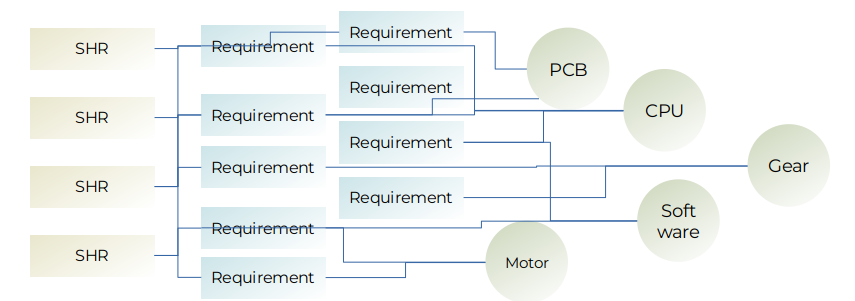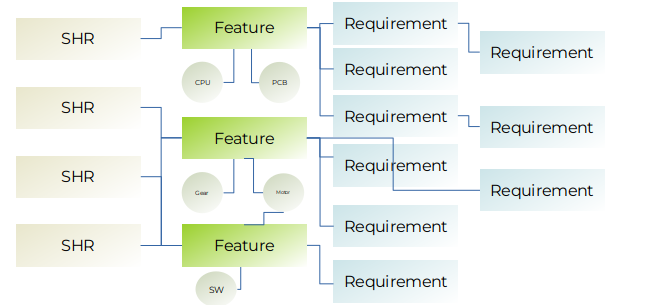Navigating Complexity
Complexity is inherent in product development, often stemming from unclear requirements, communication gaps, project size inflation, and dependency tangles. These complexities can impede innovation, hinder collaboration, and escalate costs.

Complexity example- even few stakeholders, components and requirements can lead to high linkage dependencies increasing overall complexity making it no longer maintainable.
Introduction to Feature-Based Requirements Engineering
FBRE represents a shift in requirements engineering by prioritizing the modularization of features or functional components as the fundamental building blocks. Unlike traditional methods centered around entire system requirements, FBRE breaks down complexity by focusing on modular features.
Advantages of FBRE
Modularization enables Features to become independent modules, enhancing manageability.
Early Planning and structuring occur at the feature level, providing a clear roadmap from the project's outset.
Enhanced Reusability reducing redundancy across projects.
Improved Communication enhances clear definitions of features for communication, aligning stakeholders and development teams.
Early Application of FBRE from the project's initiation offers benefits
Preventing Scope Creep through early modularization enables a more accurate assessment of project scope, minimizing uncontrolled scope creep.
Efficient Resource Allocation when the entire project is structured around modular features.
Quick Adaptation to Changes without disrupting the entire development process as a result from the modular structure
Enhanced Collaboration between cross-functional teams, promoting a shared understanding
Same example from above based on FBRE. Removed dependencies, less complexity, clear responsibilities and a chance for re-use and modularization.

FBRE in Sustainable Product Development
In the context of sustainable product development, FBRE aligns seamlessly with broader goals:
Transparency in Sustainability Integration by features become focal points for integrating sustainability criteria, ensuring transparency in the development process.
Efficient Impact Assessment due to Sustainability considerations being integrated into specific features
Strategic Planning for Sustainability incorporating eco-friendly features seamlessly.
In conclusion, the early application of Feature-Based Requirements Engineering is a pragmatic approach to address complexity in corporate product development. It offers a clear, modular, and foresighted path, aligning seamlessly with sustainability goals.